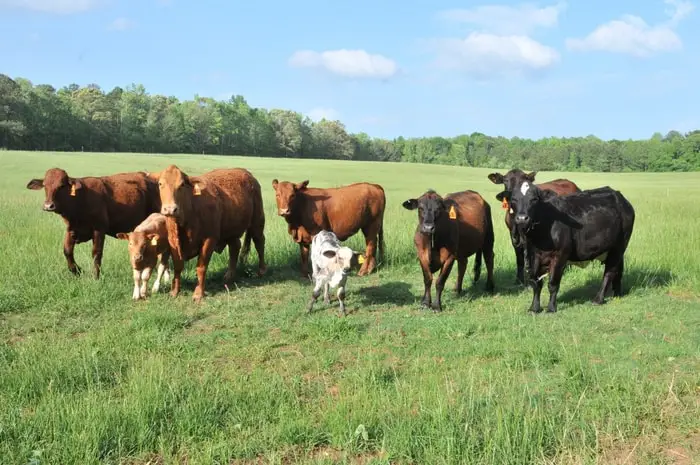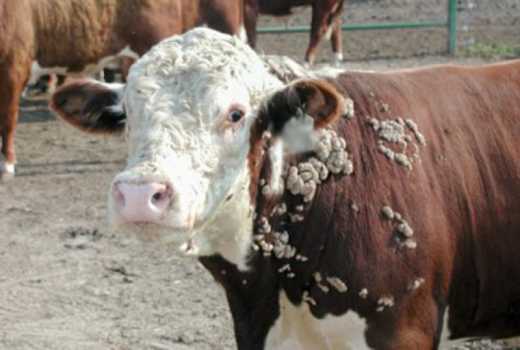Bovine papillomatosis is a viral disease of livestock characterized by the formation of fibrous cores covered by layers of epithelial cells termed as warts in the skin. The disease is seen mostly in young animals. The disease is transmitted through direct contact and indirectly by needles, bull leads, fomites, etc.
Important Information on Bovine Papillomatosis
Bovine papillomatosis is a highly infectious and contagious viral disease of all domestic animals. The disease mainly affects cattle, buffalo, sheep, goats, and camels. The lesions are commonly found in the head, neck, legs, and tail regions. In some cases, lesions are also seen in the belly, udder, teats, and seath of male animals. In my article, I shall discuss the critical information on this disease briefly.

Causes of Bovine Papillomatosis
The disease is caused by the Bovine Papillomavirus (BPV) belonging to the genus papillomavirus under the family of papovaviridae. The virus is enveloped, icosahedral, and double-stranded DNA virus. There are more than 13 types of this virus, affecting the epithelial cells and mucosal cells.
Pathogenesis of Cutaneous Papillomatosis in Cattle
The pathogenesis of Bovine papillomatosis are as follows:
- The virus infects the basal epithelial cells, causing excessive growth, which is characterized by wart formation.
- Papillomas contain few connective tissues and are the result of basal cell hyperplasia without viral antigens production.
Clinical Signs and Symptoms of Bovine Papillomatosis
The typical clinical signs are:
- The incubation period of papillomatosis ranges from 3 to 8 weeks.
- Warts may be either sessile or pedunculated and are mainly seen in the head, around the eyes, neck, and shoulder region.
- Wart lesions may occasionally be seen all over the body, and in female animals may be seen in teats and udder.
- Rarely they may be seen as interdigital fibropapillomas.
- Wart lesions are also found in the urinary bladder in cattle suffering from BEH, caused by Bracken fern carcinogenicity.
- The mass wart lesions may interfere with movements.

Pathological Lesions of Papillomatosis in Cattle
The pathological lesion that helps diagnosis are as follows:
- The cutaneous warts are found as gross lesions in different parts of the body.
- The size varies from small-sized to massive tumors depending on the severity of the disease.
Diagnosis of Bovine papillomatosis
The disease mainly diagnosed by:
- Clinical signs.
- Histopathological findings.
Differential Diagnosis of papillomatosis in Cattle
The disease needs to be differentiated from:
- Fibropapilloma.
- Carcinoma of the eye affects only the eyelids or cornea.
Treatment of Bovine Papillomatosis
As cutaneous papillomatosis is a self-limiting disease, in most cases, the animals recover by shedding cutaneous warts after 4 to 5 years. However, if an auto vaccine is used, the animals will shed warts by few months to over a year of administering the vaccine course.
The following is the procedure of auto-vaccine preparation:
- Clean the animal thoroughly and collect 10 grams of wart lesions.
- Grind into pieces in 100 ml of normal saline.
- Sieve and take the supernatant.
- Add 0.4 ml of formalin in 100 ml of supernatant and keep overnight.
- The vaccine is given subcutaneously as follows:
- 2 ml on the first day.
- 3 ml on the third day.
- 4 ml on the fifth day.
- 5 ml on the seventh day.
- 6 ml on the ninth day.
- 7 ml on the eleventh day.
- The wart lesions get complete resolution within 25-30 days after the last injection.
- The cattle with massive wart lesions of sessile nature may even take 2 to 3 years.
Prevention and Control of Bovine Papillomatosis
The preventive measures of papillomatosis in cattle are:
- The diseased animals should not be allowed to run with the clean herd.
- The use of auto-vaccine in clinical cases is one of the easier means to control the disease.